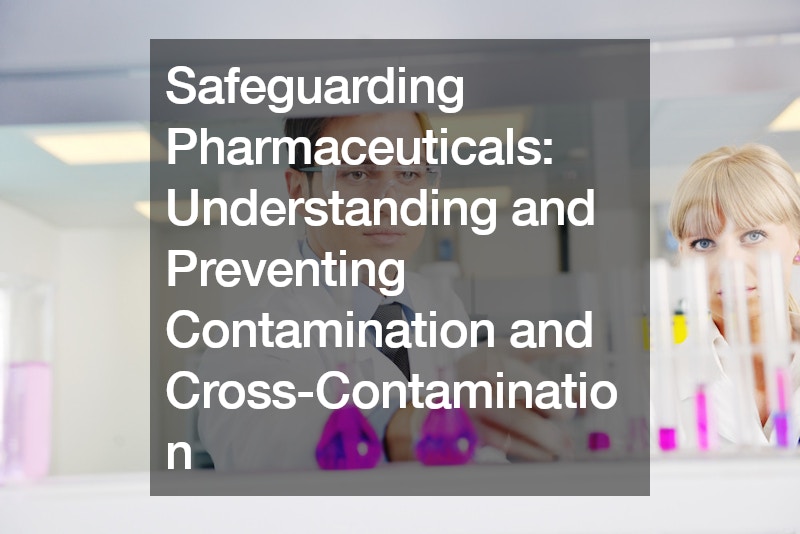
In pharmaceutical manufacturing, ensuring the safety and efficacy of products is significant. Central to this goal is the rigorous prevention of contamination and cross-contamination. Let’s delve into the challenges the pharmaceutical industry faces, understanding their sources and exploring effective prevention strategies.
Contamination: Understanding the Risks
Contamination in pharmaceuticals can take various forms, each presenting unique risks to product safety and patient health. Microbial contamination, for instance, involves the presence of microorganisms such as bacteria, viruses, and fungi.
These unseen intruders can lead to infections and other adverse effects if introduced into pharmaceutical products.
Chemical contamination is another concern, arising when foreign chemicals like solvents or heavy metals infiltrate the product. Even in trace amounts, these substances can compromise the intended therapeutic effects or trigger harmful reactions in patients.
Physical contamination poses yet another threat, manifesting as the presence of extraneous materials like glass, metal, or plastic particles. While seemingly innocuous, these foreign bodies can inflict harm if ingested and must be meticulously prevented.
Moreover, with the increasing complexity of pharmaceutical formulations and manufacturing processes, the risk of contamination from novel sources such as excipients and packaging materials has become a growing concern. Therefore, comprehensive risk assessments and proactive mitigation strategies are essential to address emerging contamination threats effectively.
Sources of Contamination: Identifying the Culprits
Contamination doesn’t emerge out of thin air; it has distinct sources within the pharmaceutical manufacturing process. Raw materials, for instance, can be contaminated during harvesting, transportation, or storage. Even the air and water used in manufacturing can harbor microorganisms and impurities, posing contamination risks if not adequately controlled.
Equipment also plays a significant role; inadequate cleaning or maintenance can turn it into a breeding ground for contaminants. Similarly, personnel practices are critical; poor hygiene among staff members can inadvertently introduce harmful substances into the manufacturing process. Even the manufacturing environment itself, if not properly designed and maintained, can contribute to contamination through the presence of particles, microorganisms, or chemicals.
Preventing Contamination: Building Strong Defenses
To combat contamination effectively, pharmaceutical manufacturers must implement robust prevention strategies. Adherence to Good Manufacturing Practices (GMP) is foundational, providing a framework for maintaining the highest standards of quality and safety throughout the production process.
Facility design is equally crucial; ensuring proper layout, ventilation, and segregation of production areas can mitigate contamination risks. Strict adherence to cleaning and sanitization protocols for both equipment and facilities helps maintain a sterile environment essential for pharmaceutical production.
Thorough material handling and storage procedures further minimize contamination risks, ensuring that raw materials are properly segregated and stored to prevent cross-contamination. Integrating advanced techniques such as pipeline pigging services into routine maintenance schedules adds an extra layer of defense, ensuring the cleanliness and functionality of pharmaceutical pipelines and thereby contributing to contamination prevention efforts.
Cross-Contamination: Understanding the Threat
Cross-contamination amplifies the risks posed by contamination, as it involves the transfer of harmful substances or microorganisms from one product, surface, or material to another. This unintended contamination can occur directly through contact or indirectly through intermediary sources like air, water, or personnel.
Shared pharmaceutical manufacturing facilities present heightened risks of cross-contamination, as multiple companies utilize the same equipment and spaces. Without stringent protocols in place, the potential for contamination increases exponentially, necessitating vigilance and proactive measures to safeguard product integrity.
Preventing Cross-Contamination: Strengthening Defenses
Preventing cross-contamination requires a multifaceted approach, beginning with robust GMP compliance and facility design tailored to minimize risks. Proper training and education for personnel are essential, instilling a culture of hygiene and best practices to mitigate contamination risks at their source.
Rigorous cleaning and sanitization procedures for equipment and facilities help eliminate potential pathways for cross-contamination, while environmental monitoring ensures early detection of any anomalies that could compromise product safety.
In addition, implementing strict protocols for the handling of waste and by-products further reduces the risk of cross-contamination. Proper disposal methods and segregation of waste streams prevent the inadvertent spread of contaminants within the manufacturing environment.
By integrating these measures into their operations, pharmaceutical manufacturers can strengthen their defenses against both contamination and cross-contamination, ensuring the production of safe and high-quality pharmaceutical products.
Upholding Pharmaceutical Integrity
In conclusion, safeguarding pharmaceuticals against contamination and cross-contamination demands unwavering diligence and adherence to best practices. By understanding the sources and risks associated with contamination, pharmaceutical manufacturers can implement targeted prevention strategies to uphold the safety and efficacy of their products. Through a collective commitment to quality control and continuous improvement, we can ensure that patients receive pharmaceuticals that meet the highest standards of safety and effectiveness, thus advancing public health and well-being.
.





